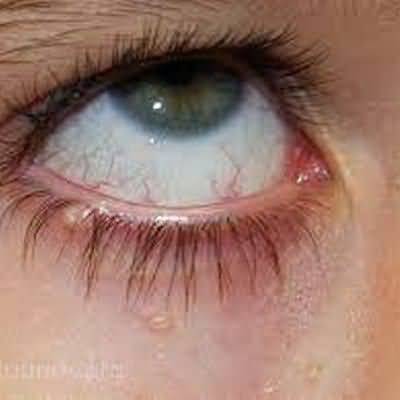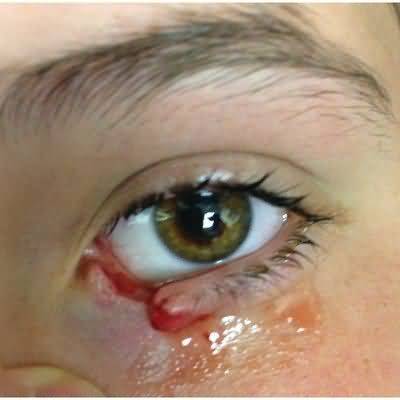acute bacterial rhinosinusitis sinusitis
acute bacterial rhinosinusitis sinusitis
ESSENTIALS OF DIAGNOSIS
General Considerations
Compared with viral rhinitis, acute bacterial rhinosinusitis infections are uncommon, but they still affect nearly 20 million Americans annually and account for over 2 billion dollars in health care expendituresAcute bacterial rhinosinusitis usually is a result of impaired mucociliary clearance, inflammation of the nasal cavity mucosa, and obstruction of the ostiomeatal complex, or sinus “pore
” Edematous mucosa causes obstruction of the complex, resulting in the accumulation of mucus in the sinus cavity that becomes secondarily infected by bacteria
The largest of these ostiomeatal complexes is deep to the middle turbinate in the middle meatus
This complex is actually a confluence of complexes draining the maxillary, ethmoid, and frontal sinuses
The sphenoid drains from a separate complex between the septum and superior turbinate
The typical pathogens of bacterial rhinosinusitis are S pneumoniae, other streptococci, H influenzae, and less commonly, S aureus and Moraxella catarrhalis
Pathogens vary regionally in both prevalence and drug resistance; about 25% of healthy asymptomatic individuals may, if sinus aspirates are cultured, harbor such bacteria as well
Clinical Findings
Symptoms and SignsThere are no agreed-upon criteria for the diagnosis of acute bacterial rhinosinusitis in adults
Major symptoms include purulent nasal drainage, nasal obstruction or congestion, facial pain/pressure, altered smell, cough, and fever
Minor symptoms include headache, otalgia, halitosis, dental pain, and fatigue
Many of the more specific symptoms and signs relate to the affected sinus(es)
Bacterial rhinosinusitis can be distinguished from viral rhinitis by persistence of symptoms for more than 10 days after onset or worsening of symptoms within 10 days after initial improvement
Acute rhinosinusitis is defined as lasting less than 4 weeks, and subacute rhinosinusitis, as lasting 4–12 weeks
Acute maxillary sinusitis is the most common form of acute bacterial rhinosinusitis because the maxillary is the largest sinus with a single drainage pathway that is easily obstructed
Unilateral facial fullness, pressure, and tenderness over the cheek are common symptoms, but may not always be present
Pain may refer to the upper incisor and canine teeth via branches of the trigeminal nerve, which traverse the floor of the sinus
Purulent nasal drainage should be noted with nasal airway obstruction or facial pain (pressure)
Maxillary sinusitis may result from dental infection, and teeth that are tender should be carefully examined for signs of abscess
Drainage of the periapical abscess or removal of the diseased tooth typically resolves the sinus infection
Acute ethmoiditis in adults is often accompanied by maxillary sinusitis, and symptoms are similar to those described above
Localized ethmoid sinusitis may present with pain and pressure over the high lateral wall of the nose between the eyes that may radiate to the orbit
Sphenoid sinusitis is usually seen in the setting of pan sinusitis or infection of all the paranasal sinuses on at least one side
The patient may complain of a headache “in the middle of the head” and often points to the vertex
Acute frontal sinusitis may cause pain and tenderness of the forehead
This is most easily elicited by palpation of the orbital roof just below the medial end of the eyebrow
Hospital-associated sinusitis is a form of acute bacterial rhinosinusitis that may present without the usual symptoms
Instead, it may be a cause of fever in critically ill patients
It is often associated with prolonged presence of a nasogastric or, rarely, nasotracheal tube causing nasal mucosal inflammation and ostiomeatal complex obstruction
Pansinusitis on the side of the tube is common on imaging studies
Imaging
The diagnosis of acute bacterial rhinosinusitis can usually be made on clinical grounds alone
Although more sensitive than clinical examination, routine radiographs are not cost-effective and are not recommended by the Agency for Health Care Policy and Research or American Association of Otolaryngology Guidelines
Consensus guidelines recommend imaging when clinical criteria are difficult to evaluate, when the patient does not respond to appropriate therapy or has been treated repeatedly with antibiotics, when intracranial involvement or cerebrospinal fluid rhinorrhea is suspected, when complicated dental infection is suspected, or when symptoms of more serious infection are noted
When necessary, noncontrast screening coronal CT scans are more cost-effective and provide more information than conventional sinus films
CT provides a rapid and effective means to assess all of the paranasal sinuses, identify areas of greater concern (such as bony dehiscence, periosteal elevation or maxillary tooth root exposure within the sinus), and speed appropriate therapy
CT scans are reasonably sensitive but are not specific
Swollen soft tissue and fluid may be difficult to distinguish when opacification of the sinus is due to other conditions, such as chronic rhinosinusitis, nasal polyposis, or mucus retention cysts
Sinus abnormalities can be seen in most patients with an upper respiratory infection, while bacterial rhinosinusitis develops in only 2%
If malignancy, intracranial extension, or opportunistic infection is suspected, MRI with gadolinium should be ordered instead of, or in addition to, CT
MRI will distinguish tumor from fluid, inflammation, and inspissated mucus far better than CT, and will better delineate tumor extent (eg, involvement of adjacent structures, such as the orbit, skull base, and palate)
Bone destruction can be demonstrated as well by MRI as by CT
Treatment
All patients with acute bacterial rhinosinusitis should have careful evaluation of painNSAIDs are generally recommended
Sinus symptoms may be improved with oral or nasal decongestants (or both)—eg, oral pseudoephedrine, 30–60 mg every 6 hours, up to 240 mg/day; nasal oxy- metazoline, 0
05% or oxymetazoline, 0
05–0
1%, one or two sprays in each nostril every 6–8 hours for up to 3 days
Intranasal corticosteroids (high-dose mometasone furoate 200 mcg each nostril twice daily for 21 days) can help reduce facial pain and congestion
Between 40% and 69% of patients with acute bacterial rhinosinusitis improve symptomatically within 2 weeks without antibiotic therapy
Antibiotic treatment is controversial in uncomplicated cases of clinically diagnosed acute bacterial rhinosinusitis because only 5% of patients will note a shorter duration of illness with treatment, and antibiotic treatment is associated with nearly twice the number of adverse events compared with placebo
Antibiotics may be considered when symptoms last more than 10 days or when symptoms (including fever, facial pain, and swelling of the face) are severe or when cases are complicated (such as immunodeficiency)
In these patients, administration of antibiotics does reduce the incidence of clinical failure by 50% and represents the most cost-effective treatment strategy
Selection of antibiotics is usually empiric and based on a number of factors, including regional patterns of antibiotic resistance, antibiotic allergy, cost, and patient tolerance
For adults younger than 65 years with mild to moderate acute bacterial rhinosinusitis, the recommended first-line therapy is amoxicillin-clavulanate (500 mg/125 mg orally three times daily or 875 mg/125 mg orally twice daily for 5–7 days), or in those with severe sinusitis, high-dose amoxicillin-clavulanate (2000 mg/125 mg extended-release orally twice daily for 7–10 days)
In patients with a high risk for penicillin-resistant S pneumoniae (age over 65 years, hospitalization in the prior 5 days, antibiotic use in the prior month, immunocompromised status, multiple comorbidities or severe sinus infection), the recommended first-line therapy is the high-dose amoxicillin-clavulanate option (2000 mg/125 mg extended-release orally twice daily for 7–10 days)
For those with penicillin allergy or hepatic impairment, then doxycycline (100 mg orally twice daily or 200 mg orally once daily for 5–7 days), or clindamycin (150–300 mg every 6 hours) plus a cephalosporin (cefixime 400 mg orally once daily or cefpodoxime proxetil 200 mg orally twice daily) for 10 days are options
Macrolides, trimethoprim-sulfamethoxazole, and second- or third generation cephalosporins are not recommended for empiric therapy
Hospital-associated infections in critically ill patients are treated differently from community-acquired infections
Removal of a nasogastric tube and improved nasal hygiene (nasal saline sprays, humidification of supplemental nasal oxygen, and nasal decongestants) are critical interventions and often curative in mild cases without aggressive antibiotic use
Endoscopic or transantral cultures may help direct medical therapy in complicated cases
In addition, broad-spectrum antibiotic coverage directed at P aeruginosa, S aureus (including methicillin-resistant strains), and anaerobes may be required
Local complications of acute bacterial rhinosinusitis include orbital cellulitis and abscess, osteomyelitis, cavernous sinus thrombosis, and intracranial extension
Orbital complications typically occur by extension of ethmoid sinusitis through the lamina papyracea, a thin layer of bone that comprises the medial orbital wall
Any change in the ocular examination necessitates immediate CT imaging
Extension in this area may cause orbital cellulitis leading to proptosis, gaze restriction, and orbital pain
Select cases are responsive to intravenous antibiotics, with or without corticosteroids, and should be managed in close conjunction with an ophthalmologist or otolaryngologist, or both
Extension through the lamina papyracea can also lead to subperiosteal abscess formation (orbital abscess)
Such abscesses cause marked proptosis, ophthalmoplegia, and pain with medial gaze
While some cases respond to antibiotics, such findings should prompt an immediate referral to a specialist for consideration of decompression and evacuation
Failure to intervene quickly may lead to permanent visual impairment and a “frozen globe
” Osteomyelitis requires prolonged antibiotics as well as removal of necrotic bone
The frontal sinus is most commonly affected, with bone involvement suggested by a tender swelling of the forehead (Pott puffy tumor)
Follow- ing treatment, secondary cosmetic reconstructive procedures may be necessary
Intracranial complications of sinusitis can occur either through hematogenous spread, as in cavernous sinus thrombosis and meningitis, or by direct extension, as in epidural and intraparenchymal brain abscesses
Fortunately, they are rare today
Cavernous sinus thrombosis is heralded by ophthalmoplegia, chemosis, and visual loss; the diagnosis is most commonly confirmed by MRI
When identified early, cavernous sinus thrombosis typically responds to intravenous antibiotics
Frontal epidural and intracranial abscesses are often clinically silent, but may present with altered mental status, persistent fever, or severe headache
When to Refer
Failure of acute bacterial rhinosinusitis to resolve after an adequate course of oral antibiotics necessitates referral to an otolaryngologist for evaluationEndoscopic cultures may direct further treatment choices
Nasal endoscopy and CT scan are indicated when symptoms persist longer than 4–12 weeks
Any patients with suspected extension of disease outside the sinuses should be evaluated urgently by an otolaryngologist and imaging should be obtained


















